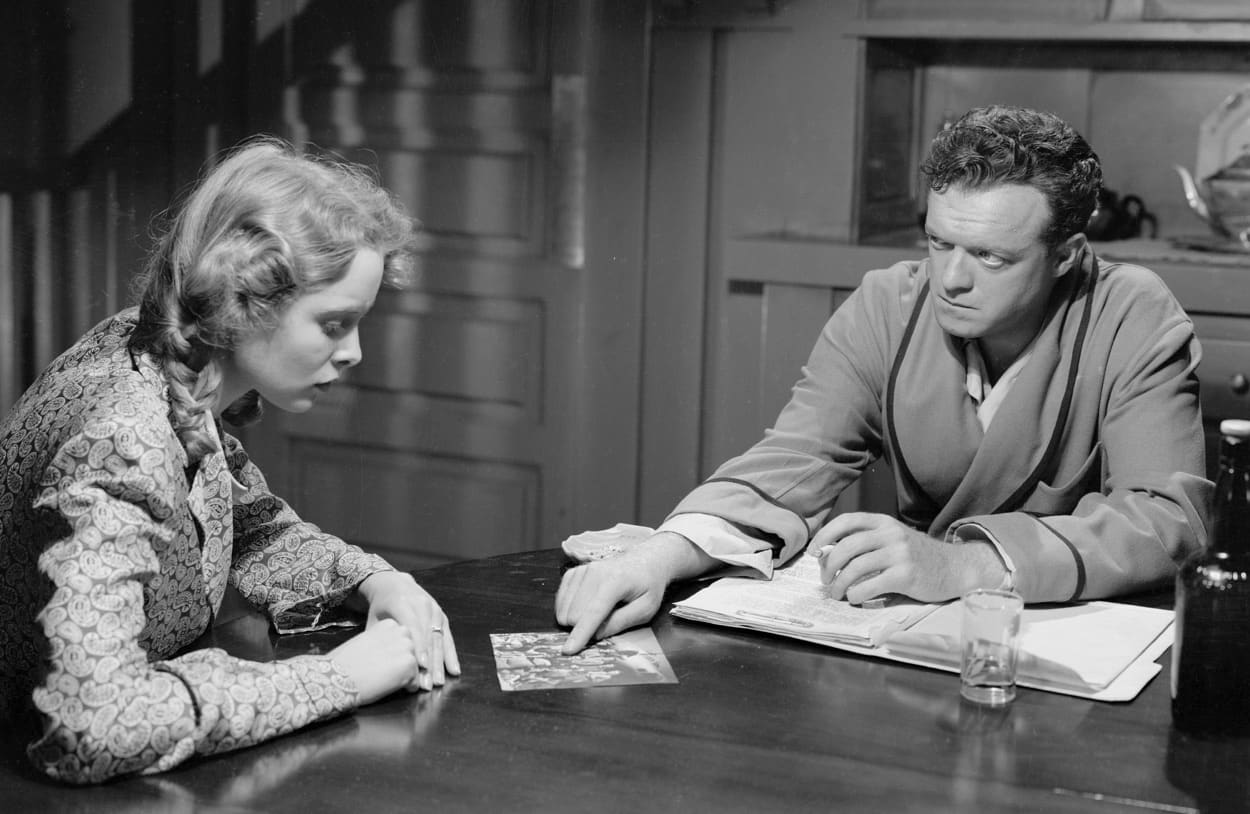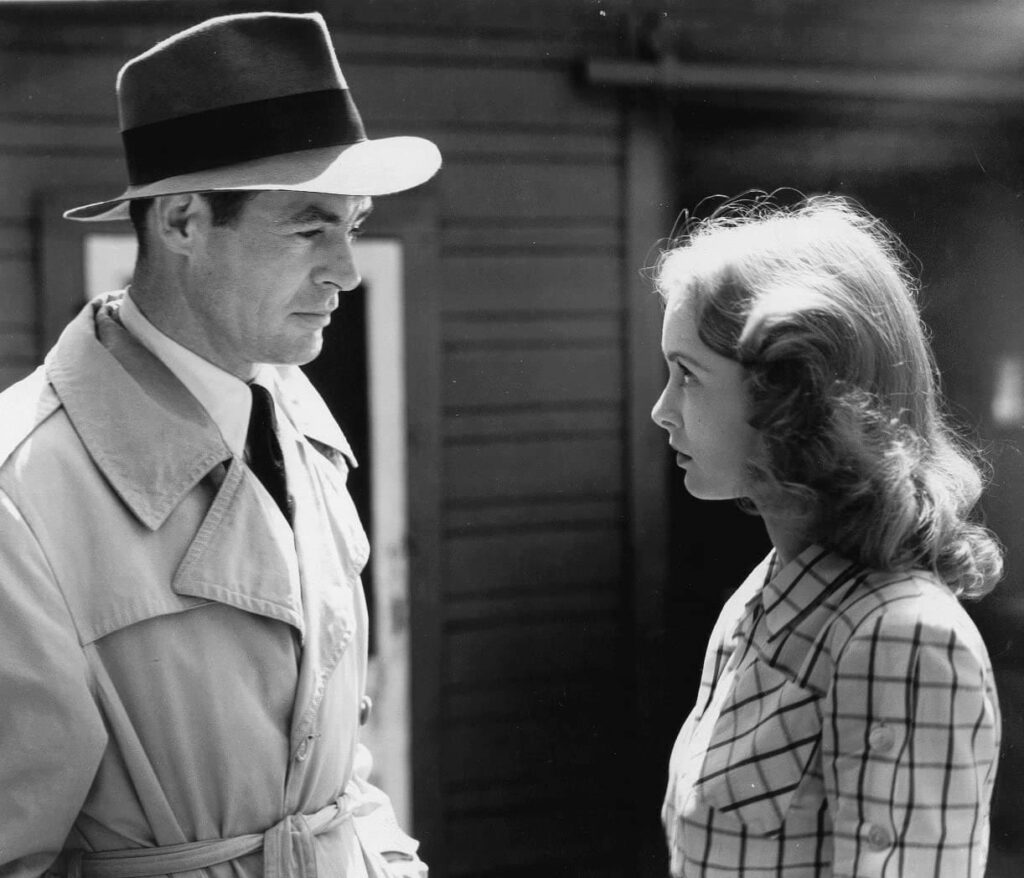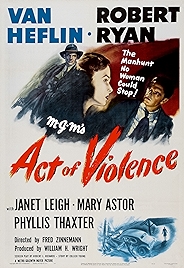A man arrives in a small, neat town in California. It’s a bright sunny day but he’s brought a sliver of dark, noirish New York with him on the Greyhound bus. And also a gun. As he limps across the street away from the bus station, a band plays, veterans march and flags flutter. It’s Memorial Day. Joe is in town to kill an old Army buddy.
Like those implacable, remorseless creatures from It Follows, Joe relentlessly pursues his victim. To the nice house in the suburbs that his quarry, war veteran Frank, helped build. Out to the lake where Frank has gone fishing. Back to his house after Frank realises he’s being followed and takes flight. To LA. Back again. Joe never pauses, not when Frank’s bright, sweet wife, Edith, first threatens and then begs him to stop the deadly pursuit. Not when Joe’s own girl, Ann, arrives in town on a mission to try and stop him.
It’s 1948 and the war is over. But while the rest of the country celebrates the optimism and prosperity of the post-War years, there are still scores to settle, old wounds that need dressing, or addressing.
It turns out, it’s not too spoilerish to reveal, that there’s something shady in Frank’s past, that while he and Joe were in captivity in a Nazi prison camp, Frank did something he now wishes could remain in the Nazi prison camp. But Joe is here to remind him, with extreme prejudice, and he’s travelled the entire breadth of the country to do so.
Unsurprisingly, perhaps, Act of Violence bombed at the box office. A grim thriller shaking up certainties about American valour during the Second World War, and drawing attention to the traumatised mindset of some veterans was exactly what audiences didn’t want to see. Critics loved it, and still do.
For good reason. It’s brilliantly cast, for starters – Van Heflin as the weaselly sweaty Frank, Robert Ryan as the implacable and deadly Joe, Janet Leigh as Frank’s sweet wife, Phyllis Thaxter as Joe’s desperate girl and Mary Astor as a tart with a heart Frank turns to when the pursuit has driven him away from the sunlit uplands of post-War progress and into the darkness of the noirish underbelly.
The dramatic yet nuanced lighting is by Robert Surtees, a legend of cinematography who’d work similar magic on The Bad and the Beautiful, and then prove there was more to him than modulated noirish shadows on movies as different as Ben-Hur and The Graduate.
It’s also brilliantly directed, by Fred Zinnemann, whose careful camera set-ups are economical and pack a real dramatic punch (that shot of Frank in an LA bar and Joe arriving and standing in the doorway in the distance, out of focus because Frank hasn’t realised he’s there, is one of many beauties). Zinnemann goes for a kind of heightened realism, shooting out on the streets, in bars, in actual locations with actual real people (not extras) in them. This was the film that he first felt was his and set him on the path to later triumphs like High Noon and From Here to Eternity.
The ending prefigures High Noon, in fact. Two men, a clock and a railway station and it’s entirely satisfying in terms of storytelling, something you often can’t say about noir movies, which tended to attract the censor’s urge to punish wrongdoing and reward virtue, regardless of how much sense it made.
It’s about perfect in every respect, and would work beautifully in a double bill with 1955’s Bad Day at Black Rock, which comes at similar themes of dark secrets, gnawing guilt and avenging payback from a different angle. And also features Robert Ryan – none better.
Act of Violence – Watch it/buy it at Amazon as part of a two-fer also including Mystery Street
I am an Amazon affiliate
© Steve Morrissey 2023


